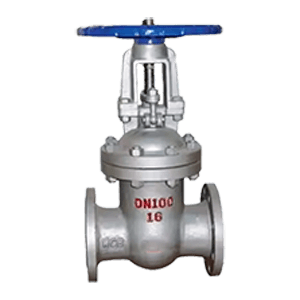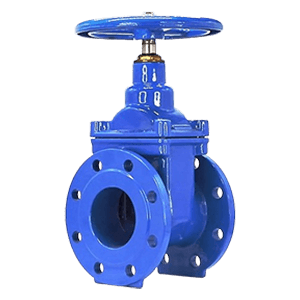In this article, we’ll explore the difference between gate valves and sluice valves, clarify their usage, and help you decide which one is right for your system.
What Is a Gate Valve
A gate valve is a type of linear motion valve designed to either fully stop or fully allow the flow of liquid through a pipeline. It features a wedge- or parallel-type gate that moves up or down between two seats to control flow. These valves are not intended for throttling and are best used in on/off applications.
Key Features:
-
☆Operates by lifting a gate (disc) out of the fluid path
-
☆Offers minimal flow restriction when fully open
-
☆Typically used in oil & gas, chemical, marine, and power industries
-
☆Can handle high-pressure and high-temperature environments
-
☆Available in various materials: cast iron, carbon steel, stainless steel, bronze
What Is a Sluice Valve
A sluice valve, commonly used in water supply and irrigation systems, is essentially a type of gate valve. The term “sluice valve” is widely used in civil and municipal water applications, especially in countries like India and the UK. It controls the flow of water by lifting or lowering a gate inside the valve body.
Key Features:
-
☆Typically used in low-pressure and large-diameter water pipelines
-
☆Often found in public water distribution networks
-
☆May feature rising stem or non-rising stem configurations
-
☆Operated manually or by actuators in buried applications
-
☆Often designed to work with potable water or stormwater systems
Key Differences Between Gate Valve and Sluice Valve
| Feature | Gate Valve | Sluice Valve |
|---|---|---|
| Terminology | Common in oil & gas, industrial sectors | Common in water supply, municipal systems |
| Application | Industrial use (steam, oil, chemicals) | Waterworks and irrigation |
| Pressure/Temperature | Suitable for high pressure/temperature | Typically used for low-pressure water systems |
| Standards | API, ASME, DIN standards | BS 5163, IS 14846 standards (waterworks) |
| Material Construction | Wide range including metal alloys | Usually cast iron, ductile iron with epoxy lining |
| Actuation | Manual, pneumatic, electric | Mostly manual or geared |
| Design Focus | Built for durability in harsh conditions | Optimized for corrosion resistance in water |
Are Gate Valve and Sluice Valve the Same
Technically, sluice valve is a type of gate valve, but the reverse is not always true. Sluice valves are specialized gate valves used primarily in water systems, whereas gate valves have broader industrial usage. The main difference lies in nomenclature, design standards, and applications.
Choosing the Right Valve for Your Application
-
Fluid Type: For water, a sluice valve is usually sufficient. For oil, gas, or chemicals, a heavy-duty gate valve is recommended.
-
Operating Conditions: High temperature and pressure require industrial-grade gate valves.
-
Regulatory Standards: Ensure the valve complies with local standards—API for industrial, BS/IS for water systems.
-
Manufacturer Reliability: Choose a certified valve manufacturer like Qingdao I-Flow to ensure long-term reliability and global compliance.
Why Choose I-FLOW as Your Valve Supplier
At Qingdao I-Flow, we manufacture and export a wide range of gate valves, including models that meet AWWA, BS 5163, and DIN standards. Whether your project is in marine, industrial, or municipal water systems, our sluice valves and gate valves are engineered for performance, safety, and long-term durability.
-
①Over 10 years of global export experience
-
②ISO 9001 certified manufacturing
-
③CE, WRAS, DNV, and ABS approvals
-
④Materials: Cast iron, ductile iron, stainless steel, bronze
-
⑤Valve sizes from DN50 to DN1000+
Post time: Jun-11-2025


